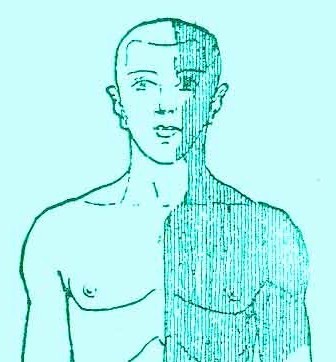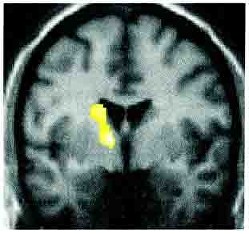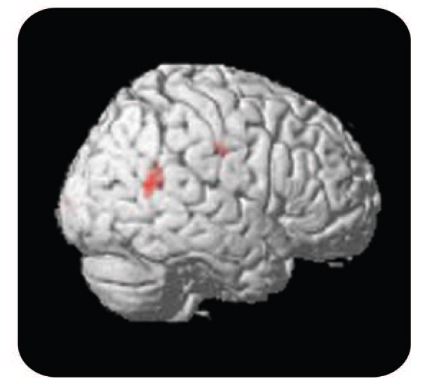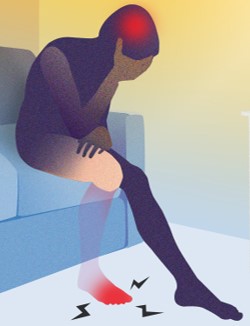Its natural when you have a problem to ask ‘Why has this happened?’
But it is important with FND not to confuse the question ‘Why has this happened?‘ with the question, ‘What has gone wrong in my body to cause the symptoms?’
These are two separate questions and have two different answers.
Let’s deal with the second question first – ‘What has gone wrong in my body to cause the symptoms?’ or “How are the symptoms happening?”
For all of the FND symptoms described on this website, the basic answer to this is that there is a problem in the function of the nervous system.
For symptoms like weakness and movement disorder, there is a problem with the way the brain is sending messages to the body
For symptoms like numbness and pain there is a problem with the way the brain is receiving messages from the body.
During functional seizures or dissociative symptoms, the brain is in a trance like state, a bit like hypnosis.
We are beginning to understand the complexities of what goes wrong with the nervous system in patients with FND, and in related disorders like in chronic pain.
Functional scans of the brain show which parts of the brain are active or underactive when people have FND.
Let me explain a couple of these studies to you.
In this study four people with FND causing numbness and weakness down one side of the body were scanned using a machine called SPECT that measures blood flow in the brain.

They were scanned when they had the symptoms, and then they were scanned again when the symptoms had improved.
Its important to recognise that this is a scan looking at the FUNCTION of the brain not the STRUCTURE – like a normal MRI scan you would have.
The scans showed that when they had the symptoms there was a part of the brain called the thalamus that wasn’t working very well. You can see it in yellow. If you had a stroke you would have numbness down the opposite side of your body.

When the patients symptoms improved then their scans improved too.
Another important study of FND looked at 8 people with functional tremor and looked at their brain activity using fMRI. fMRI stands for functional MRI. Its looking at the function of the brain not the structure.
In this study the researchers, led by Professor Valerie Voon and Prof Mark Hallett, compared brain activity when the functional tremor was taking place compared to brain activity when the subjects were being asked to make a tremor deliberately. Then they compared the scans to see what the difference was.

The results were really interesting. They found that in FND tremor an area of the brain called the right temporoparietal cortex was underactive. THis is an important ‘node’ in a network within the brain that helps us to know that we are in control of our actions. We call that a network for ‘self-agency’. That network is not working so well in FND. This would explain why in FND it looks like someone is using their voluntary movements, but actually what the person experiences is true, its happening without the person being in control of the movement.
You may have heard of Phantom Limb Syndrome or Phantom Limb Pain. This is where someone undergoes amputation of a limb but they feel like its still there. Studies of Phantom Limb have shown that whats going wrong is almost certainly that the ‘map’ of the limb in the brain has gone wrong.
Your brain’s map of your body ought to change when there is new information. So if you lose your left leg your brain should register this as – ‘Update! – no left leg anymore’. In Phantom limb that updating process goes wrong. Neuroscientists think that the brain is making a really strong ‘prediction’ that the leg is there. Its so strong, and been doing it for so many years in that person, that even the absence of the leg doesnt stop it predicting the leg. And if a brain predicts a leg is there, then that person will feel that it is there!

In FND we think that something similar may be happening. But instead of a strong prediction that the leg IS there, for various reasons the brain develops a prediction that the leg is NOT there.
Again, the problem is that, although the brain is getting messages that the leg is there, the prediction that it ISNT there is too strong. The brain doesnt update, just like in Phantom Limb, and so the person experiences the prediction, not the sensation.
Why would a brain decide to predict that a limb is NOT there? For lots of reasons
In chronic pain we know that many changes occur to the nervous system that can’t be seen with normal scans. These changes occur at nerve endings, in the spinal cord and most importantly in the brain.
There are a series of processes in the nervous system which behave like tiny volume knobs. When someone is in chronic pain these little volume knobs get turned up increasing someones sensitivity to pain.

Ive put together some videos explaining chronic pain and neuroscience in the media section of this site.
At the moment all of these techniques are only suitable for research studies. We are not in a position to do functional neuroimaging to diagnose or ‘prove’ FND.
I understand why people with FND would like some evidence of whats wrong. It might help reduce stigma or people not believing this is REALLY happening to them.
But as a neurologist seeing people with FND I dont need a scan to believe my patients. Lots of my patients with other disorders have normal scans too.
There is much that is still not known about what goes wrong in the nervous system to cause FND, but it is not a complete mystery.
In many other neurological diseases you can see what the problem is, either on a scan, for example multiple sclerosis, or under a microscope, like Parkinson’s disease.
Patients with FND do not have damage to their nervous systems so its not surprising you can’t see it on a scan. Instead the nervous system is not functioning properly.
If you were a computer it’s like having a software problem rather than a hardware problem. If you have a software bug on your computer, it might keep crashing or work really slowly. You wouldn’t solve that problem by opening up the computer and looking at the components. You wouldn’t see anything if you did an x-ray of that computer.
You’d have to solve it by reprogramming the computer, working out which programs were causing the problem.
Human beings are obviously more complicated than computers. Our thoughts, behaviour, sensations and emotions are our programs.
This leads in to the next section, Why has it happened?, which describes something of what might make someone vulnerable to getting functional symptoms.


We will be re-directing you to the University of Edinburgh’s donate page, which enable donations in a secure manner on our behalf. We use donations for keeping the site running and further FND research.
